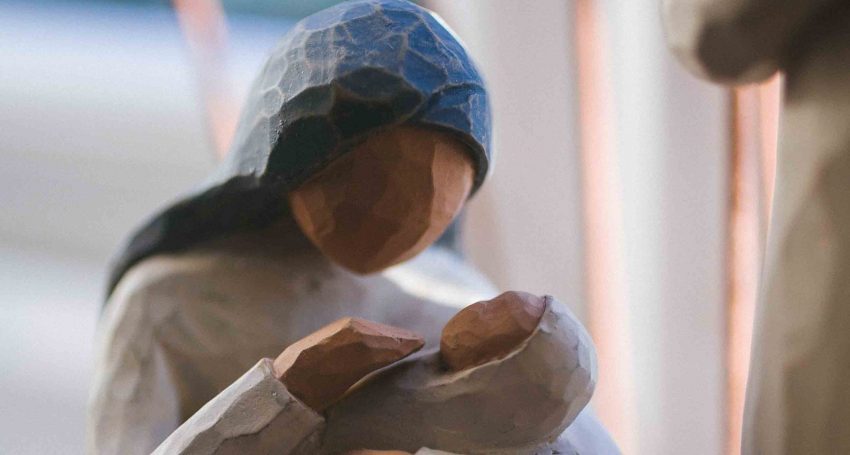Mary, Mother of Our Lord
Features
The Ven. Keith Dean-Jones reflects on the Feast Day of ‘Mary, Mother of Our Lord’, which is celebrated on 15 August: “Sometimes our iconography is unhelpful, and we can get the idea that her obedience to God’s will was easy. But I do not think that this was the case, and she who delighted in the baby of Bethlehem stood at the foot of his cross on Calvary”

Story Timeline
Saints and martyrs
- The life and legacy of Mary Sumner
- Dietrich Bonhoeffer: faith as unsovereign attention
- The saint and the sultan
- The man who would be king
- St Cuthbert – opening the door to the heart of heaven
- ‘Utterly orthodox and utterly radical’
- Anselm of Canterbury
- A maverick medieval mystic for modern times
- Anglican Church remembers missionaries on New Guinea Martyrs Day
- Ugandan Anglican Martyr, Archbishop Janani Luwum
- Meet a saint for our times – Evelyn Underhill
- Benedict of Nursia
- Lady Eliza Darling – pioneering social reformer and evangelical Anglican
- Hildegard of Bingen
Anglicans believe that good theology is Christ-centred, Bible based, affirmed by ancient catholic tradition and supported by the perceptions of human reason. This is very much the case with our understanding of the Blessed Virgin Mary, and whatever we believe must be consistent with these principles.
At times I have encountered Anglicans who believe that Mary is an impediment to our relationship with God. But we affirm the maxim lex orandi, lex credendi (i.e. ‘the law of what is to be prayed is the law of what is to be believed’), and in our foundational liturgical document, the 1662 Book of Common Prayer, there are five Marian feasts. In the 1995 A Prayer Book for Australia, the Feast of Mary the Mother of Our Lord was re-established (15 August). This is the Anglican name for the Roman Catholic Feast of the ‘Assumption of Mary’ and the Orthodox Feast of the ‘Falling Asleep of Mary’.
Sadly, differing understandings of the place of Mary in God’s act of redemption have been a cause of division. In 1854, Pope Pius IX defined the Dogma of the Immaculate Conception. This is the belief that, from the moment of conception, Mary was “preserved immune from all stain of original sin.” Anglicans responded by asserting that there is no clear Biblical basis for this belief. In 1950, Pope Pius XII defined the Dogma of the Assumption. This is the belief that, at the time of death, Mary was “assumed body and soul into heavenly glory”. Again, Anglicans responded by asserting the teaching of Article Six, “Holy Scripture containeth all things necessary to salvation: so that whatsoever is not read therein, nor may be proved thereby, is not to be required of any man, that it should be believed as an article of the Faith or be thought requisite or necessary to salvation.”
Is there a way forward? I think that it is important that we look deeply into the meaning of these two controversial Marian dogmas. In 2004 the Anglican Roman Catholic International Commission (ARCIC) issued An Agreed Statement entitled Mary Grace and Hope in Christ.
The ARCIC document states, “Mary is marked out from the beginning as the one chosen, called, and graced by God through the Holy Spirit for the task that lay ahead of her” (paragraph 54), and that, at the Annunciation, “the word of God delivered by Gabriel addresses her as already ‘graced’” (para. 54). The authors point out that the Greek perfect participle kecharitomene means “one who has been and remains endowed with grace”.
Advertisement
Similarly, Mary’s place in heaven is to be regarded as an anticipation of our destiny, and that “Christians from East and West through the generations have discerned in faith that it is fitting that the Lord gathered her wholly to himself in Christ” (para.57). In 1977 I attended a clergy summer school, and the principal speaker was Michael Ramsey, the one hundredth Archbishop of Canterbury and, with Pope Paul VI, the co-founder of ARCIC. A priest asked him, “What do believe about the assumption of Mary?” He answered simply and profoundly, “If she is not in heaven where then is she?”
Mary is important for us. First, because she is the Mother of the Lord. The oldest title applied to her by the Church is Theotokos, a Greek term that means ‘God bearer’ or ‘Mother of God’. This was approved by the bishops meeting at the Council of Ephesus, also known as the Third Ecumenical Council, in 431 to refute the Nestorian heresy that divided Jesus’ humanity from his divinity. The Patriarch of Constantinople, Nestorius, held the view that Mary may be called the Christotokos, or ‘Christ bearer’, but not the Theotokos. By virtue of baptism and faith we are brought into a special relationship with Mary, and as she is the mother of him who is both God and man, so she is mother of all who are united to him.
Advertisement
Secondly, because she is the example for all followers of Jesus. At the Annunciation, Mary responded to God’s invitation to be mother of the Lord. She said, “Behold, I am the handmaid of the Lord; let it be it unto me according to your word” (Luke 1.38). Sometimes our iconography is unhelpful, and we can get the idea that her obedience to God’s will was easy. But I do not think that this was the case, and she who delighted in the baby of Bethlehem stood at the foot of his cross on Calvary.
Roman Catholic and Orthodox Christians pray ‘to’ Mary (i.e. ‘invocate’). Anglican tend to pray ‘with’ her (i.e. ‘comprecate’). With her, we pray that we may bring birth to God’s word in the world.





